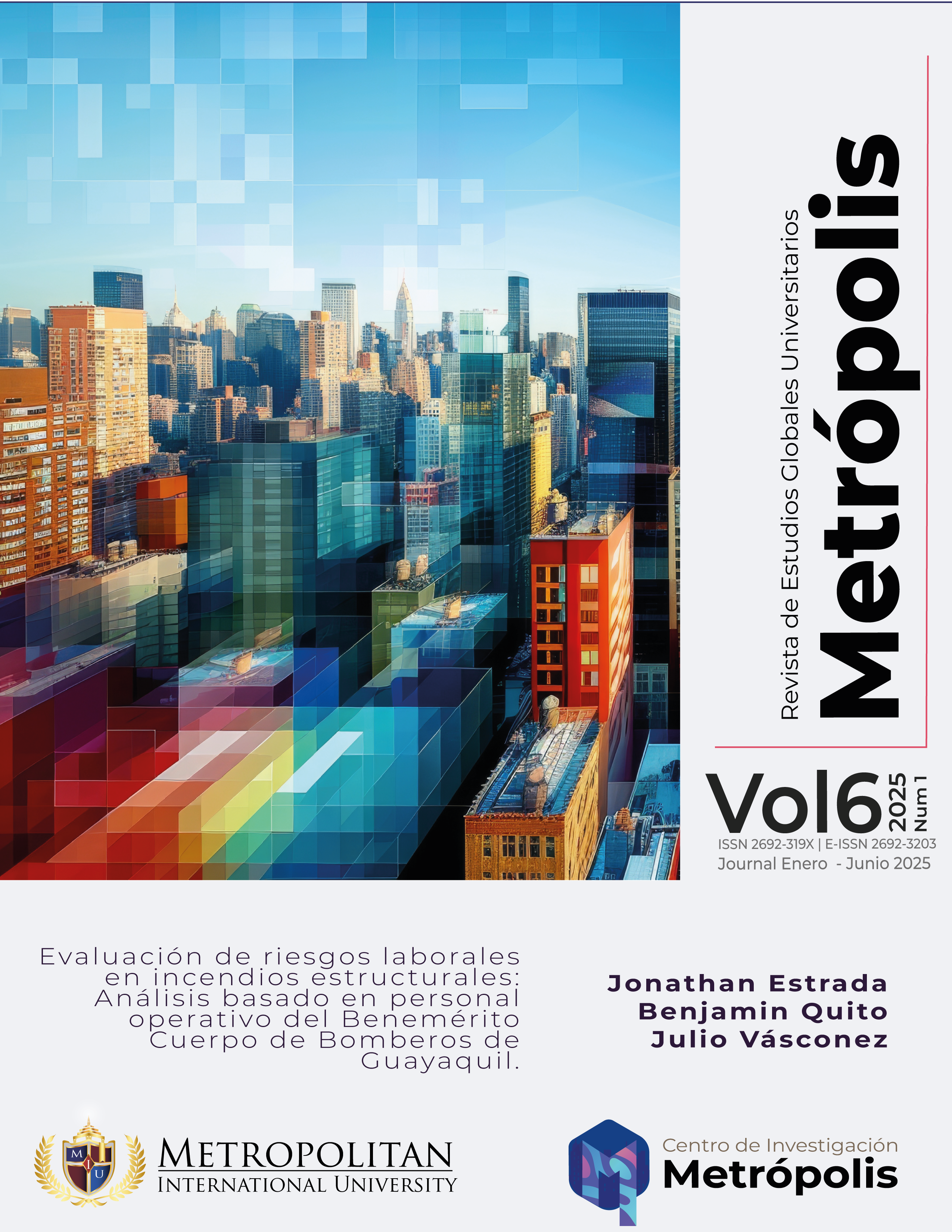Evaluación de riesgos laborales en incendios estructurales: Análisis basado en personal operativo del Benemérito Cuerpo de Bomberos de Guayaquil.
Palabras clave:
Bomberos, incendios estructurales, riesgos, seguridad laboral, prevención.Resumen
En este artículo se aborda la evaluación de riesgos laborales en incendios estructurales, centrándose en el personal operativo del Benemérito Cuerpo de Bomberos de Guayaquil. A pesar de contar con protocolos de seguridad y capacitación especializada, los bomberos enfrentan un entorno altamente peligroso, caracterizado por la imprevisibilidad de los incendios y las dificultades asociadas con el trabajo, como la fragilidad de las estructuras y el manejo de materiales en condiciones adversas. La metodología utilizada incluye un enfoque cualitativo, con un diseño descriptivo y exploratorio basado en la recopilación de información, comparando los datos obtenidos con estándares internacionales de seguridad en incendios. Identificando riesgos laborales como lesiones físicas, estrés y problemas de salud a largo plazo, se subraya la necesidad de implementar medidas preventivas adecuadas y de optimizar la capacitación del personal para garantizar su seguridad y bienestar mental. El estudio resalta la insuficiencia de la literatura científica en el contexto ecuatoriano sobre evaluación de riesgos, sugiriendo un enfoque integral que contemple el bienestar de los bomberos y la eficacia en la atención de emergencias. Concluye que es fundamental adoptar estrategias innovadoras y adaptadas a la realidad, asegurando que los protocolos de seguridad sean efectivamente implementados. Esto protegería al personal y mejoraría la respuesta ante incendios, beneficiando a la comunidad en su conjunto. La investigación propuesta tiene el potencial de establecer un marco sólido para la mejora continua en la seguridad, promoviendo una cultura organizacional que priorice tanto la protección del cuerpo bomberil como la prevención de emergencias en la sociedad.

##submission.downloads##
Publicado
Cómo citar
Número
Sección
Licencia

Esta obra está bajo una licencia internacional Creative Commons Atribución-NoComercial-CompartirIgual 4.0.





